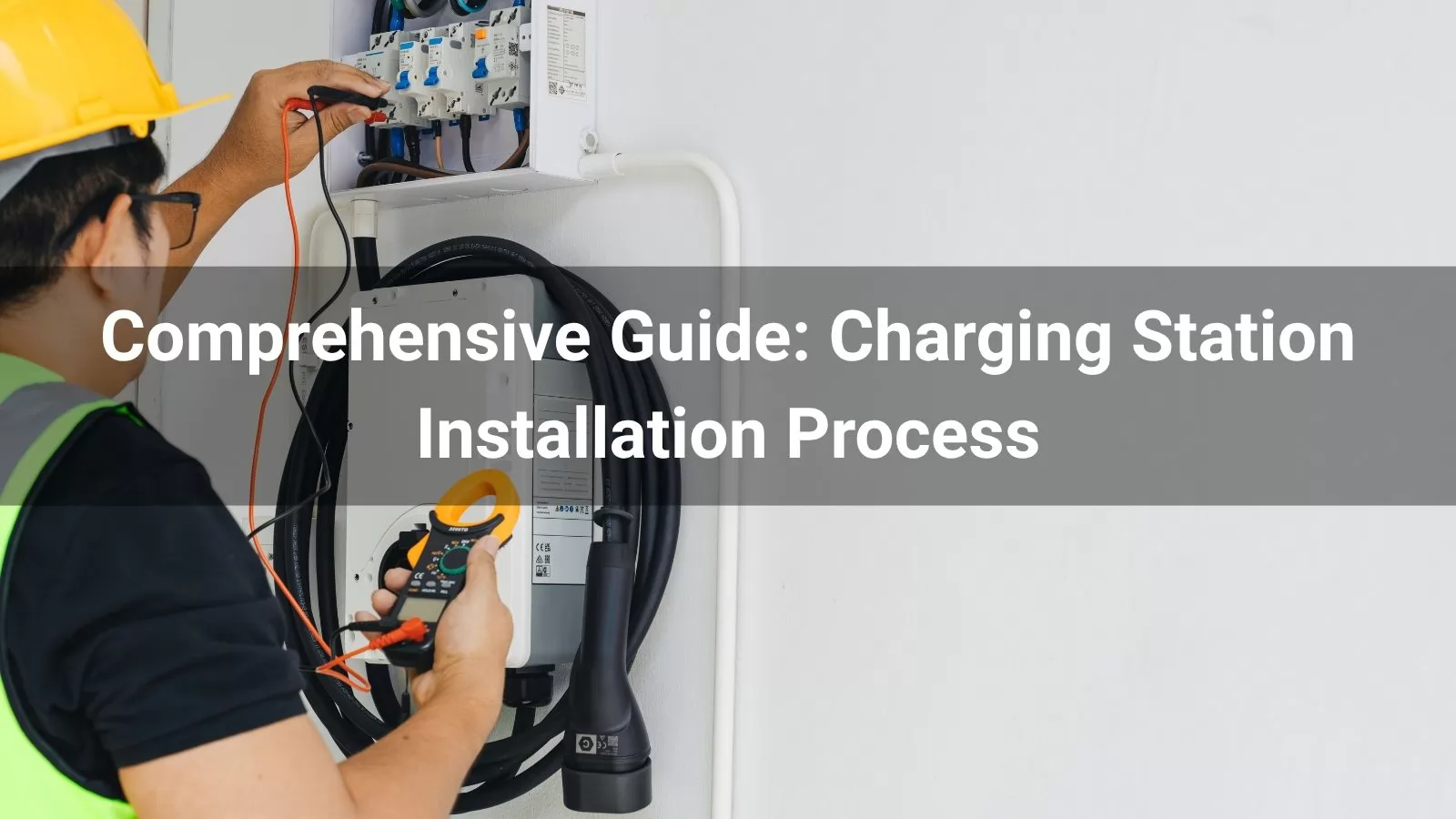
The installation of an electric vehicle charging station is a systematic process that can be divided into four main phases: Site Preparation & Foundation Work, Concrete Foundation Construction, Charging Pile Mounting, and Final Electrical Connection & Commissioning.
Phase 1: Site Preparation & Foundation Excavation
-
Site Establishment and Safety:
-
Erect safety barriers and construction cordoning to define the work area, ensuring the safety of the public and workers.
-
Verify the installation location against the site plan, ensuring it is clear of underground utilities.
-
Layout and Excavation:
-
Precisely mark the dimensions of the foundation base on the ground using stakes and string, according to the engineering drawings.
-
Excavate the soil to the required depth and size for the foundation. The excavated area should be slightly larger than the foundation itself to allow for formwork placement.
-
Trenching for Conduit:
-
Excavate a narrow trench from the main power source to the foundation location. This trench will house the electrical conduit.
-
Place a PVC pipe of the specified diameter within this trench to act as a protective conduit for the power and communication cables. This is a critical step to protect the cables from moisture and physical damage.
Phase 2: Concrete Foundation Construction
-
Foundation Formwork and Reinforcement:
-
Verify Excavation: Measure the excavated pit to ensure it meets the design specifications before proceeding.
-
Construct Formwork: Build a sturdy wooden or metal mould ("formwork") inside the excavation. This mould will define the shape of the concrete foundation.
-
Fabricate Steel Cage: Assemble a reinforcing steel cage (rebar) according to structural specifications. This cage significantly enhances the tensile strength of the concrete.
-
Place the Steel Cage: Carefully lower the finished steel cage into the centre of the formwork, ensuring it is elevated off the ground using concrete "chairs" or spacers to create a protective concrete cover.
-
Concrete Mixing and Pouring:
-
Mix Concrete: Prepare high-strength concrete by thoroughly mixing the correct proportions of cement, sand, crushed stones (aggregate), and clean water. Ready-mix concrete can also be used for consistency and efficiency.
-
Pour Concrete: Pour the mixed concrete into the formwork in a continuous operation. Use a vibrator to eliminate air pockets and ensure the concrete fully encapsulates the steel cage and fills all voids.
-
Curing and Finishing:
-
Smoothing: Level and smooth the top surface of the concrete foundation using a trowel to create a flat, even plane.
-
Curing: The concrete construction is now complete. The foundation must cure for a minimum of 5-7 days to achieve sufficient strength. The formwork should not be removed prematurely, and the concrete should be kept moist during this period for optimal strength development.
Phase 3: Charging Pile Mounting
-
Preparing for Mounting:
-
Once the foundation is fully cured, mark the precise positions for the charging station's installation holes on the foundation using the pile's base plate as a template.
-
Drilling and Anchoring:
-
Using a hammer drill and a masonry bit, drill holes at the marked positions to the required depth and diameter.
-
Insert heavy-duty expansion screws or chemical anchors into the holes and tighten them securely. These anchors will provide the primary fixation for the charging station.
-
Station Installation:
-
Carefully place the charging station onto the expansion screws, aligning the base holes with the anchors.
-
Secure the station firmly in place by fastening the provided nuts and washers onto the anchors.
Phase 4: Final Electrical Connection & Commissioning
-
Electrical Wiring:
-
CRITICAL SAFETY STEP: Before any wiring, use a voltage tester to measure and confirm that the main power cable is de-energized (not live).
-
Open the charging point's service door to access the terminal blocks.
-
Pull the power and communication cables through the pre-installed PVC conduit. Connect these cables to the correct terminals inside the charging pile according to the manufacturer's wiring diagram. Ensure all connections are tight and secure.
-
Final Assembly and Testing:
-
Replace and secure the side cover and close the service door, ensuring the unit is properly sealed against the elements.
-
The installation is now physically complete. A qualified electrician must then energize the system and perform functional tests to ensure the charging pile operates correctly and safely before handing it over to the client.





